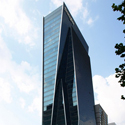Filter by
You must be a CTBUH Member to view this resource.
Dongbu Finance Building
Dongbu Kangnam Tower, Dongbu Securities Building
Building
Completed, 2001
office
158.3 m / 519 ft
35
You must be a CTBUH Member to view this resource.
You must be a CTBUH Member to view this resource.
Usually involved in the front end design, with a "typical" condition being that of a leadership role through either Schematic Design or Design Development, and then a monitoring role through the CD and CA phases.
The Design Engineer is usually involved in the front end design, typically taking the leadership role in the Schematic Design and Design Development, and then a monitoring role through the CD and CA phases.
Material Supplier refers to organizations which supplied significant systems/materials for a building project (e.g. elevator suppliers, facade suppliers, etc).
You must be a CTBUH Member to view this resource.
Usually involved in the front end design, with a "typical" condition being that of a leadership role through either Schematic Design or Design Development, and then a monitoring role through the CD and CA phases.
The Design Engineer is usually involved in the front end design, typically taking the leadership role in the Schematic Design and Design Development, and then a monitoring role through the CD and CA phases.
Material Supplier refers to organizations which supplied significant systems/materials for a building project (e.g. elevator suppliers, facade suppliers, etc).
2011 CTBUH Leaders Meeting
9 October 2011 - Event
Seoul, Songdo and Meetings
12 May 2010 - Event

10 October 2004
The Dongbu Securities Headquarters Building
Joong C. Lee & Gregory Freeman, Weidlinger Associates
The Dongbu Securities Headquarters Building in Daichi-Dong, Seoul is a dynamic interplay of interlocked, canted forms that fold into each other in a response to...
9 October 2011
Tall building industry leaders from around the globe met at the seminal Dongbu Financial Center tower for the 2011 CTBUH Leaders Meeting.
Subscribe below to receive periodic updates from CTBUH on the latest Tall Building and Urban news and CTBUH initiatives, including our monthly newsletter. Fields with a red asterisk (*) next to them are required.
View our privacy policy